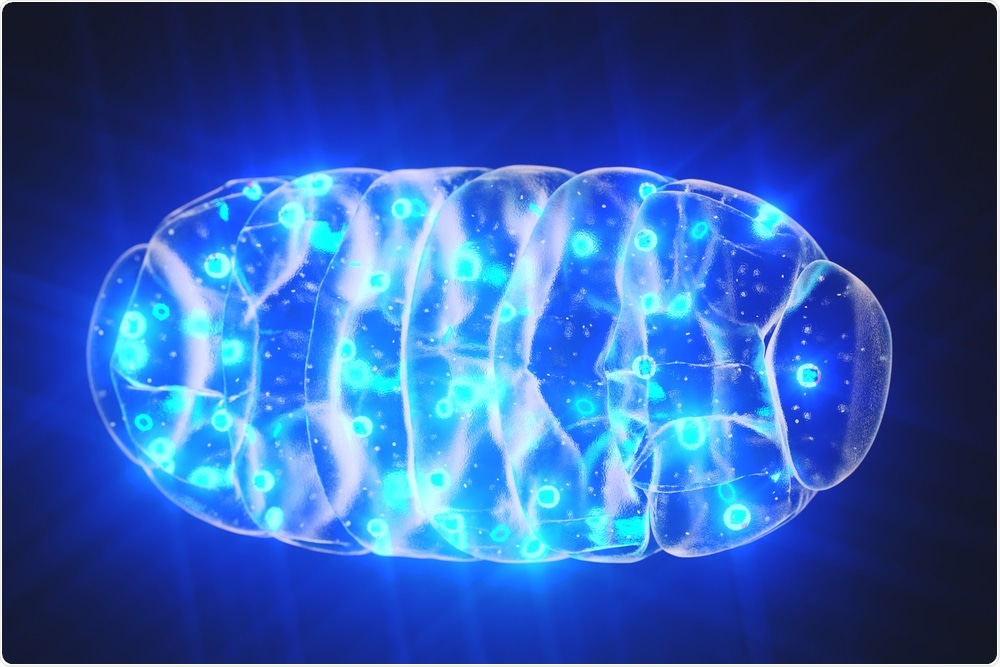Mitochondria, the powerhouse of mammalian cells, also perform vital roles in cell signaling, cell metabolism, and apoptosis. They contain their DNA compacted into a specific sub-organelle as the nucleoid. The nucleoid along with being a structure for genetic material storage is also responsible for mitochondrial DNA (mtDNA) replication and transcription.

Image Credit: Steven McDowell/Shutterstock.com
But this mechanism of nucleoid assembling and transcription regulation is not fully comprehended.
Xingguo Liu’s team from Guangzhou Institutes of Biomedicine and Health of the Chinese Academy of Sciences put forth a model of mitochondrial nucleoid self-assembly induced by phase separation. This is a novel pattern of recruitment of the mitochondrial transcription machinery through co-phase separation. The research was published in the Nature Structural & Molecular Biology journal.
The scientists pinpointed that mitochondrial transcription factor A (TFAM) undergoes phase separation induced by intrinsically disordered regions (IDRs), and phase separation of TFAM and DNA triggers the formation of the nucleoid.
To demonstrate the relationship between nucleoid assembling and mitochondrial transcription, the researchers compiled the transcription machinery in vitro. They identified that nucleoid droplet formation facilitates recruitment of the transcription machinery through a special, co-phase separation that compacts transcription initiation, elongation, and termination factors, and maintains substrates to promote mtDNA transcription.
The researchers also identified an exceptional multi-phase separation of POLRMT, the RNA polymerase for mitochondrial DNA. POLRMT is a ring-like structure encompassing mtDNA in vitro and in cells.
Moreover, the scientists identified that the elongation factor TEFM disrupts the multi-phase separation and creates more POLRMT in the inner phase of nucleoid comprising mtDNA-TFAM and facilitates the transcription. They also identified that multi-phase separation of the termination factor MTERF1 with nucleoid in transcription termination.
The current research suggested a model of mitochondrial nucleoid self-assembly triggered by phase separation of TFAM, and a novel pattern of co-phase separation involved in mitochondrial transcriptional regulation, which coordinates the roles of TFAM in both mitochondrial nucleoid organization.
Source:
Journal reference:
Long, Q., et al. (2021) Phase separation drives the self-assembly of mitochondrial nucleoids for transcriptional modulation. Nature Structural & Molecular Biology. doi.org/10.1038/s41594-021-00671-w.